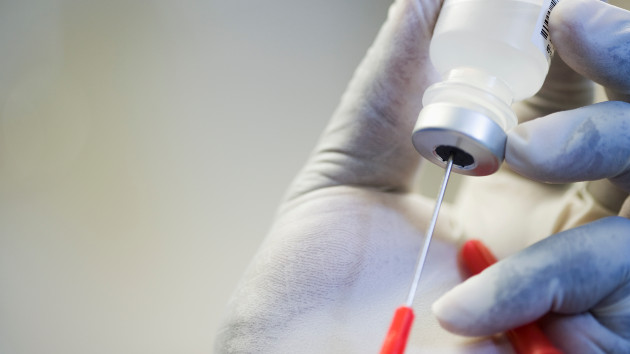(NEW YORK) — After securing enough doses in the national stockpile to vaccinate the most at-risk Americans against monkeypox, the federal government says it has begun training its sights on the next steps of the outbreak.
“We’re watching this very, very closely and will be prepared to move out against any outbreak that might happen in additional populations,” Assistant Secretary for Response and Preparedness Dawn O’Connell told ABC News.
That includes watching college campuses as students head back to school and keeping an eye on cases that spill outside of the current at-risk community of mostly gay and bisexual men.
“If we begin to see an outbreak in a college campus, we will make vaccines available on that college campus — absolutely,” said O’Connell, who leads monkeypox response within the Department of Health and Human Services.
At the same time, with cases in the U.S. passing 17,000, there are “very active internal conversations” about expanding the targeted population for vaccines, O’Connell said.
Those conversations are only possible because of the milestone the administration hit on Friday when it announced that — while facing criticism from advocates over the response so far — there were finally enough vaccines in the strategic national stockpile to fully inoculate all of the nearly 1.7 million Americans that the Center for Disease Control and Prevention has deemed at-risk.
But it’s been a rocky four months to get to that point. The Biden administration had only a few thousand vaccines on hand when the first monkeypox case was detected in the U.S. The rest of the stockpile — 1.1 million vials — was abroad in Denmark, where supply was bottlenecked with Bavarian Nordic, the only manufacturer of the JYNNEOS vaccine in the world.
The U.S. began to ease those supply constraints with a new dose-stretching policy authorized earlier this month by the Food and Drug Administration, which has allowed clinics to start extracting up to five doses from each vial by using a shallower injection method that the FDA says is just as safe and effective.
The U.S. is also underway on starting up the very first domestic facility to begin manufacturing monkeypox vaccine doses outside of Denmark, using raw materials from Bavarian Nordic but completing the “fill and finish” process in Grand Rapids, Michigan.
Grand Rapids Aseptic Manufacturing (GRAM), which O’Connell visited on Monday, will be up and running in about three months — one-third of the typical time it takes to build out a process to make vaccine, the company said.
GRAM is expected to have doses ready to ship out sometime in December, contingent on final approval from the FDA.
By March, the Michigan-based manufacturer hopes to have shipped out about 2.5 million vials, which could be used as up to 12.5 million shots under the new dose-stretching strategy.
It’s all part of an effort to move public health preparedness onto U.S. soil, O’Connell told ABC, rather than rely on other countries for resources that become scarce when they’re needed most.
“Every time I sit down with a member of Congress, I talk about the needs that I have. The strategic national stockpile is at the top,” O’Connell said.
“Making sure that the stockpile is well-funded is one of the cornerstones of my tenure in [my] position,” O’Connell said.
The stockpile, she said, has “been chronically underfunded, and it is responsible for maintaining preparedness against multiple threats.”
And while O’Connell defended the country’s early monkeypox response, saying the federal government ordered 36,000 vaccines when there were only two known cases in the U.S., she also acknowledged that there were some “lessons learned.”
“That’s not to say we haven’t made mistakes,” she said.
“I’m always worried about preparedness — making sure that I have enough for wherever this disease may go,” she said.
Still, the millions of doses being manufactured in Michigan this winter will be coming after thousands, if not tens of thousands, of Americans have already been infected.
To that, O’Connell said it’s about the medium- and long-term preparedness.
“That’s one of the reasons why I’m here is to make sure we’ve got this capacity now and in the future coming online and ready to go against whatever population is affected next,” O’Connell said, referring to the Grand Rapids facility.
Copyright © 2022, ABC Audio. All rights reserved.












